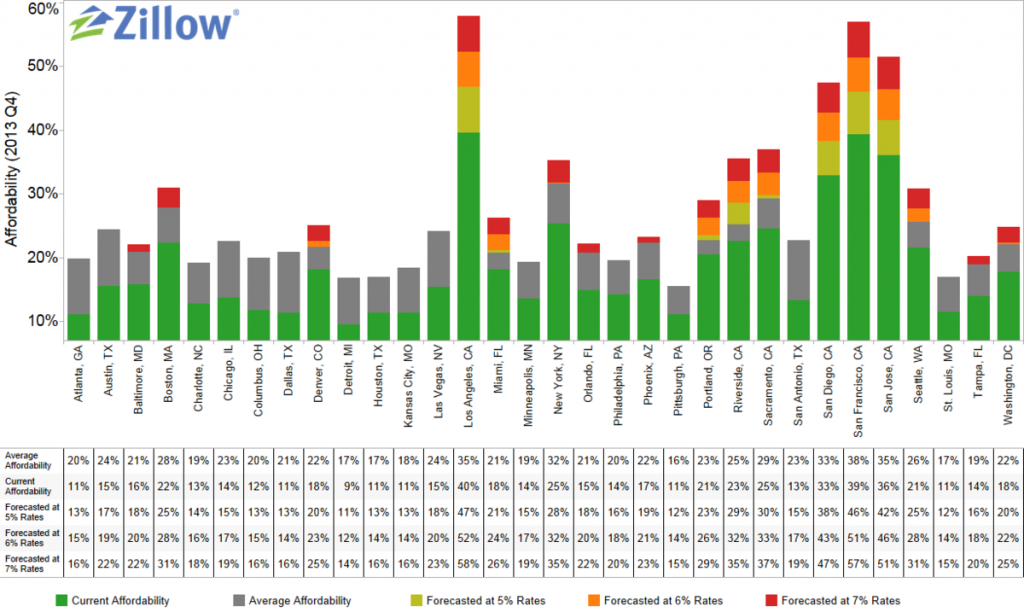One of my biggest frustrations has always been where do I invest my hard earned and sacred dollars when there seems to be so many options and many are moving targets. Clients are requesting to find returns higher and higher than ever before and yet it seems like we might be facing another recession of sorts as well as sighs of deflation…
So what advice can I give?
Here are some thoughts on finding that sweet spot in real estate market timing:
In most places, healthy job growth translates into increased housing prices. As more demand for housing from people landing those jobs runs headlong into an existing and limited housing supply that is typically slow to respond to changes in employment. The trick is to find those markets that find a sweet balance of affordability and growing employment.
On the other hand; where neither affordable housing, nor decent employment are lined up properly you will often see declining opportunities and an increase in risk.
Throughout the year, we used data to compare metro areas on these two features. This is no exact science and by no means is all you would need to be able to make proper investment decisions. However when considering recent price-to-income data, and the most recent employment data from the Bureau of Labor Statistics you should be able to see a good metrics of where to look into and where to avoid.
Almost three-quarters of metros analyzed (195 of 265) experienced some employment growth since the last time we ran this analysis, and slightly more than half (145 out of the 265 metros) experienced some improvement (in this case, a decline) in the price-to-income ratio.
Greely, Colorado; Madera, California; and Gainesville, Georgia, experienced the largest outright moves. A small deterioration in affordability outweighed a substantial gain in employment in Greely. More modest gains in employment and improved affordability was the story in Madera and Gainesville.
Sweet spots getting sweeter include Dalton, Georgia; Wausau, Wisconsin; Fayetteville, Arkansas; Reading, Pennsylvania; Ocala, Florida; Macon, Georgia; Evansville, Indiana; Burlington, North Carolina; Jacksonville, North Carolina; Atlanta, Georgia; Appleton, Wisconsin; and Charlotte, North Carolina.
Sour spots getting more sour include El Centro, California; New Orleans, Louisiana; Cleveland, Tennessee; Ann Arbor, Michigan; Punta Gorda, Florida; Baltimore, Maryland; College Station, Texas; Las Cruces, New Mexico; Missoula, Montana; Great Falls, Montana; Richmond, Virginia; Columbia, Missouri; and Bloomington, Indiana.
Atlanta is the largest large metro area ranking well for both affordability and opportunity, followed closely by Houston, Kansas City and Indianapolis. Among big markets that rank poorly are Washington, DC, Milwaukee and Boston.
Predictions for the end of 2015:
- Growth in U.S. rents will outpace growth in home values by the end of the year.
- Home values are predicted to grow 2.5 percent while rents are predicted to continue rise, at a rate of 3.5 percent annually.
- Millennials will overtake Generation X as the largest group of home buyers
- Millennials have been delaying marriage and having children, but that doesn’t mean they don’t want to buy.
- Builders will begin constructing more, less expensive homes
- Builders will stop concentrating on the upper tier of the market and will begin to build more entry-level homes.
- Home buyers will have more negotiating power in 2015
- Slowing appreciation, more inventory and the return of price cuts means potential buyers will have more choices and won’t have to move as fast.
- We will be in a recession or maybe we we are now.
Gregg Wood: Founder; Urbia Exchange

